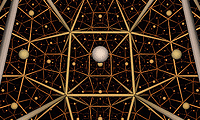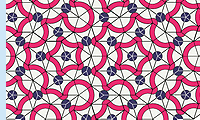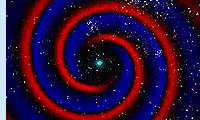| |
Invited Speakers
Armindo
Costa (Queen Mary, University of
London, UK) (homepage)
The
fundamental group of a random clique
complex
Abstract:
Random objects often have desirable
properties for which explicit examples are
hard to construct. For example often random
graphs are good expanders and have strong
Ramsey properties. The most well-studied
model of random graphs is the Erdos-Renyi
model G(n,p). In the G(n,p) model one
generates a random graph with n vertices by
adding each possible edge with independent
probability p. Properties of random graphs
are often studied asymptotically, ie by
having n tend to infinity and the
probability parameter p depend on n. A
pioneering result of Erdos and Renyi
establishes the threshold, ie the critical
p(n), for a random graph to be connected
with probability tending to one.
In this talk we will
study a model of random simplicial complexes
introduced recently by M. Kahle. This model
is known as the random clique complex model.
Here a random complex is generated by first
generating a random graph G in the
Erdos-Renyi model and subsequently adding
the faces spanned by complete subraphs
(cliques) of G. Unlike in the graph setup,
one can study several interesting
topological properties of random complexes.
We will focus on properties of the
fundamental group of a random clique
complex. This is joint work with M. Farber
and D. Horak.
|
Lisbeth
Fajstrup (Aalborg University)
(homepage)
Directed
Topology - dicoverings. Top versus
dTop.
Abstract:
Directed topology is a new
mathematical area inspired by and
with applications to concurrency. A
topological space is directed by
choosing a a subset of its paths,
called the directed paths. Maps have
to be continuous and respect this
choice - directed paths are mapped
to directed paths. In concurrency,
algorithms and tools to investigate
programs without loops are quite
well developed in this geometric
setting, and it is obvious from a
topological viewpoint to try to get
rid off loops by taking a (directed)
covering. This talk will give
examples and illustrate in what
respect the usual definition
actually works and where new ideas
have to come in. In particular, the
focus has to be on lifting
properties, not the usual discrete
fibration properties, which in the
undirected setting imply lifting.
The usual focus on connected spaces
has to be modified, and again
not
in an obvious way. This tour through
directed coverings will highlight
many of the unusual and surprising
features of directed topology.
|
Mark
Grant (University of Aberdeen)
(homepage)
Hopf invariants
for sectional category with
applications to
Topological Robotics
Abstract:
Topological complexity is a
numerical homotopy invariant of
spaces. It was defined by Farber as
part of his topological study of the
motion planning problem in Robotics.
After reviewing the definition and
basic properties, we will introduce
refined homotopy-theoretic tools for
the estimation of topological
complexity, and more generally
sectional category.
These
generalized Hopf invariants satisfy
a sort of product formula,
generalizing an observation
originally due to N. Iwase. We will
give applications to calculating the
topological complexity of two-cell
complexes and to the analogue for
topological complexity of Ganea's
conjecture on Lusternik-Schnirelmann
category. This is joint work with
Jesús González and Lucile
Vandembroucq.
(pdf)
|
Thomas
Kahl (Universidade do Minho) (homepage)
Directed
algebraic topology of
higher-dimensional automata
Abstract: Higher-dimensional
automata constitute one of the most
expressive models for concurrent
systems. By definition, an HDA is a
precubical set (i.e., a cubical set
without degeneracies) with labels on
edges. An important practical
problem in concurrency theory is the
fact that models of systems can
easily become very large. This is
called the state explosion problem.
In this talk, I will discuss
topological abstraction of
higher-dimensional automata, i.e,
the replacement of an HDA by a
smaller one that is weakly
equivalent from the point of view
directed algebraic topology and
models the same system.
|
|




